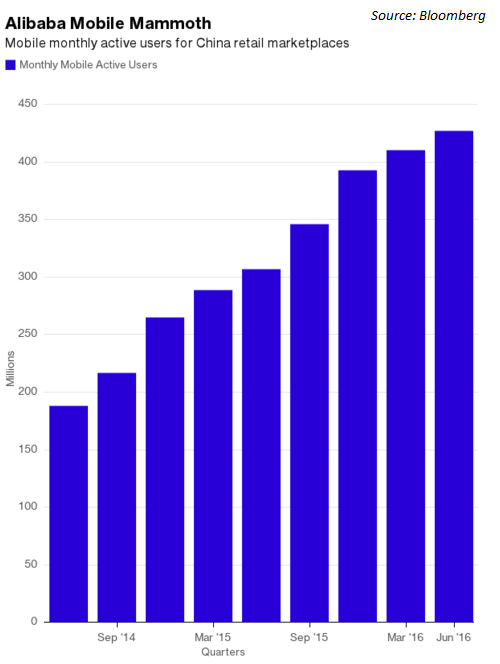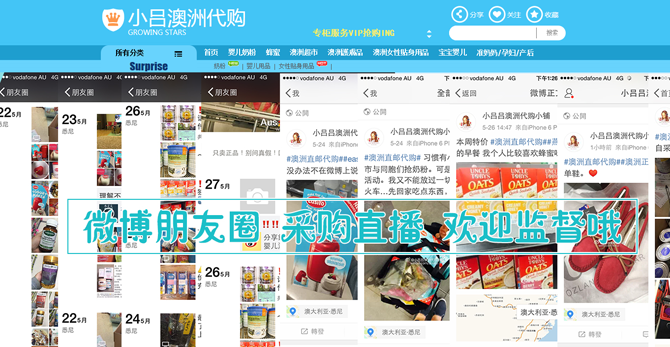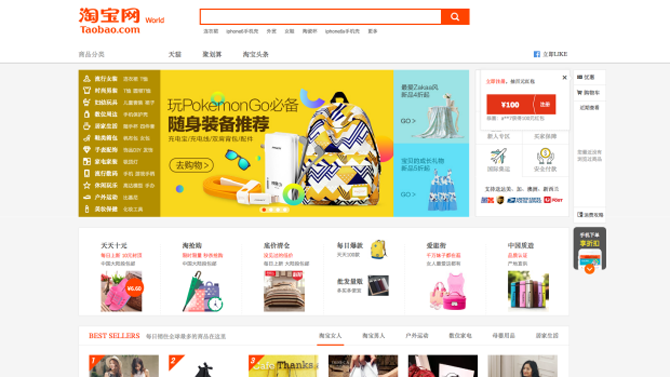-
ANZ’s Chinatown branch in Sydney’s George St is one of its busiest with a very high proportion of Chinese and Chinese-speaking customers. They love Alibaba’s e-commerce app Taobao and branch manager Peter Cai spent time speaking with customers – and staff – about just why Taobao has become the world’s most popular mobile shopping site.
When it comes to e-commerce in China, whether business-to-consumer (B2C) or consumer-to-consumer (C2C), Alibaba is king. The company has handled the move towards mobile almost flawlessly, posting impressive mobile numbers in its recent second-quarter financial results.
"We see users responding very well to a highly personalised experience on mobile Taobao."
Daniel Zhang, Alibaba chief executive{CF_IMAGE}
After the result announcement, Alibaba chief executive Daniel Zhang shared another, to many observers even more impressive, accomplishment: users launch Alibaba’s shopping app Taobao an average of seven times every day for more than a total of 25 minutes.
That compares with about nine minutes on Amazon's mobile app and 16 minutes on Twitter's app on days when users visit.
Amazing stats for any app, more impressive in particular for an e-commerce app. Alibaba says it ships 40 million packages a day compared with less than 10 million for Amazon.
Why is Taobao so successful? Here are five key elements:
- Taobao truly is the 'everything, one-stop' online store.
- It is blending e-commerce and social network in a single platform.
- It’s very adept at understanding how Chinese shoppers want to transact.
- Taobao has a number of interactive social entertainment features (including product recommendation blogs, newsfeeds, videos and special interest chat groups). For example, video livestreaming allows bloggers and merchants to interact with consumers and users can share views on products and recommendations with each other.
- The Taobao app resonates with a young, aspirational generation - the big spenders. They want a sense of community and engagement so they will come back to use the platform. Taobao is meeting that demand. They are giving what the users want.
ANZ customer Xiao Lu Aus Goods has a very large Taoboa presence, exporting Australian goods to China and importing Chinese goods for customers living in Australia. The store is packed with not just products but social interaction and special features.
{CF_IMAGE}
USER EXPERIENCE:
- Easy, convenient, effective user interface and search engine.
- There are millions of amazing bargains you can find on Taobao, branded or non-branded, often at factory or wholesale prices.
- Customers feel like they are shopping in a 'physical store'. Professional user interface layouts and product display.
- You can bargain or chat with the seller using the livechat function.
- You can inspect the product before releasing funds to pay for your purchase.
{CF_IMAGE}
TaoBao is constantly adding new features to keep people on the app longer, increasing the chance they’ll buy products.
Social networking features are a part of Taobao’s DNA. Years ago, the site’s chat-with-the-seller feature was one of the major reasons it was able to beat out foreign competitor eBay.
Alibaba’s team realised Chinese consumers preferred a social buying experience offline and
Macro alias: SubscribeButton
the same was true online, especially in an age when ecommerce was still very new to most buyers and trust between buyer and seller had to be built.
WHAT’S NEXT?
Alibaba seems to be carrying on their online success model as it moves to mobile, adding features that make shopping on your phone even more like going to the mall with your friends.
Of course, it’s not all about social. Alibaba’s Zhang credits the social changes for the rise in how often users open the Taobao app but he said another factor was good automated product discovery features:
“We see users responding very well to a highly personalised experience on mobile Taobao. Product recommendations and the banner displays are automatically customised in accordance with individual user profiles. Merchants have also been empowered with a capability to customise the in-store displays by individual user profiles”.
So here’s the golden rule for making your e-commerce app sticky: make it social, make it personal, give users what they want.
Peter Cai is International Banking Service Manager at ANZ
The views and opinions expressed in this communication are those of the author and may not necessarily state or reflect those of ANZ.
-
-
-
EDITOR'S PICKS
-
Whether China has a property bubble is an academic debate. The bottom line is the odds for a prolonged property slump are low on the back of urbanisation and the end of the deflationary threat.
14 September 2016 -
Just on a year ago, China made a historic move towards a (theoretically) more market-determined exchange rate by changing the way its daily midpoint fixing of the yuan was calculated.
9 September 2016 -
Move over dollar, euro, pound and yen, there is a new player in town flexing its muscle and keen to dominate global currency flows. That at least was the plan of the Chinese authorities when it comes to internationalising its currency, the renminbi (RMB), for the best part of the last decade.
16 September 2016



